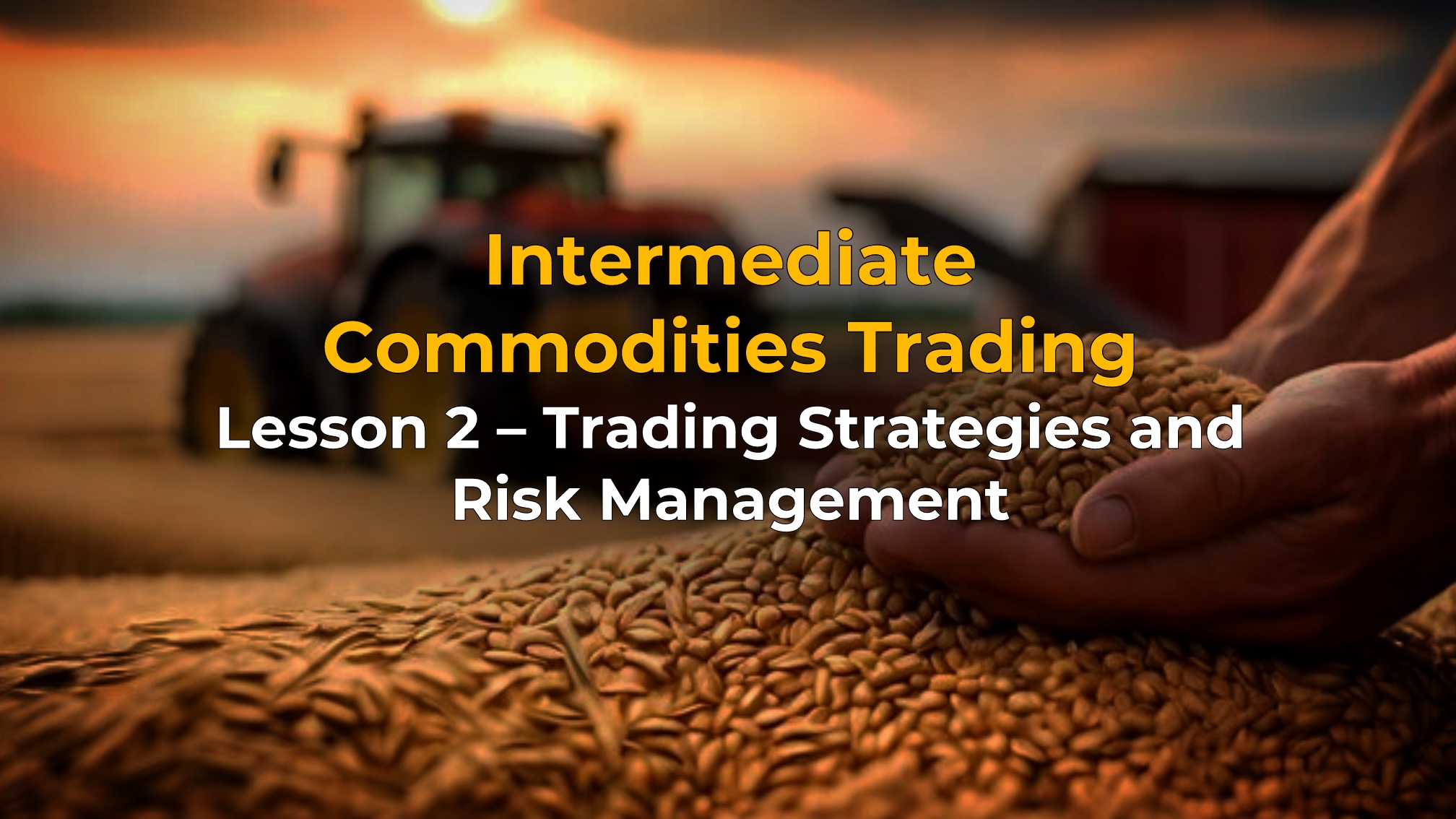
Intermediate Commodities Trading: Lesson 2 – Trading Strategies and Risk Management
06 March 2024
62 views
Advanced Trading Strategies
To excel in commodity trading, it’s crucial to understand and apply advanced trading strategies and risk management techniques. These methods not only enhance your ability to profit but also protect your investments from adverse market movements.
- Spread Trading: Involves taking simultaneous long and short positions in different but related commodities to profit from price differentials.
- Types:
- Inter-Commodity Spreads: Trading different commodities with related price movements, like crude oil vs. heating oil.
- Intra-Commodity Spreads: Trading different contract months of the same commodity, such as buying a near-term crude oil contract and selling a longer-term contract.
- Types:
- Pairs Trading: Involves trading two correlated commodities, betting that their price relationship will revert to the mean.
- Example: If gold and silver prices usually move together, you might go long on gold and short on silver if the spread between them widens unusually.
- Seasonal Trading: Exploits predictable seasonal patterns in commodity prices based on historical trends and supply-demand cycles.
- Example: Buying agricultural commodities like corn before planting season when prices are low and selling after harvest when prices rise.
- Momentum Trading: Based on the idea that commodities trending in a particular direction will continue to do so. Utilizes technical indicators to identify and capitalize on trends.
- Example: Using the Moving Average Convergence Divergence (MACD) indicator to enter trades in the direction of the prevailing trend.
Risk Management Techniques
- Setting Stop-Loss Orders: Automatically sells a commodity position if it drops to a specific price, limiting potential losses.
- Example: Setting a stop-loss order for a crude oil futures position at a level where you want to exit if the market moves against you.
- Position Sizing: Determines the amount of capital allocated to each trade to manage risk effectively.
- Example: Risking no more than 2% of your trading capital on a single trade to avoid significant losses.
- Diversification: Spreads investments across different commodities to reduce risk and avoid overexposure to any single asset.
- Example: Investing in a mix of metals, energy, and agricultural commodities to balance risk.
- Hedging: Uses futures or options to protect against adverse price movements in your commodity investments.
- Example: Hedging a long position in gold by buying put options to protect against a potential price drop.
Example: Applying Advanced Strategies
- Spread Trading:
- Scenario: You believe the price difference between crude oil and gasoline will widen. You take a long position in gasoline futures and a short position in crude oil futures.
- Pairs Trading:
- Scenario: Gold and silver prices have diverged unusually. You go long on gold and short on silver, expecting the price spread to revert to the historical mean.
- Seasonal Trading:
- Scenario: Corn prices typically rise after the planting season. You buy corn futures before planting and sell after harvest when prices peak.
- Momentum Trading:
- Scenario: Gold prices are trending upward. You use the MACD indicator to enter a long position, expecting the trend to continue.
Conclusion
Mastering advanced trading strategies and implementing effective risk management are essential for successful commodity trading. By applying techniques such as spread trading, pairs trading, and seasonal trading, and using risk management tools like stop-loss orders and diversification, you can significantly enhance your trading performance and protect your investments from market volatility. In the next lesson, we will delve deeper into these strategies and explore additional techniques to further refine your trading skills.




